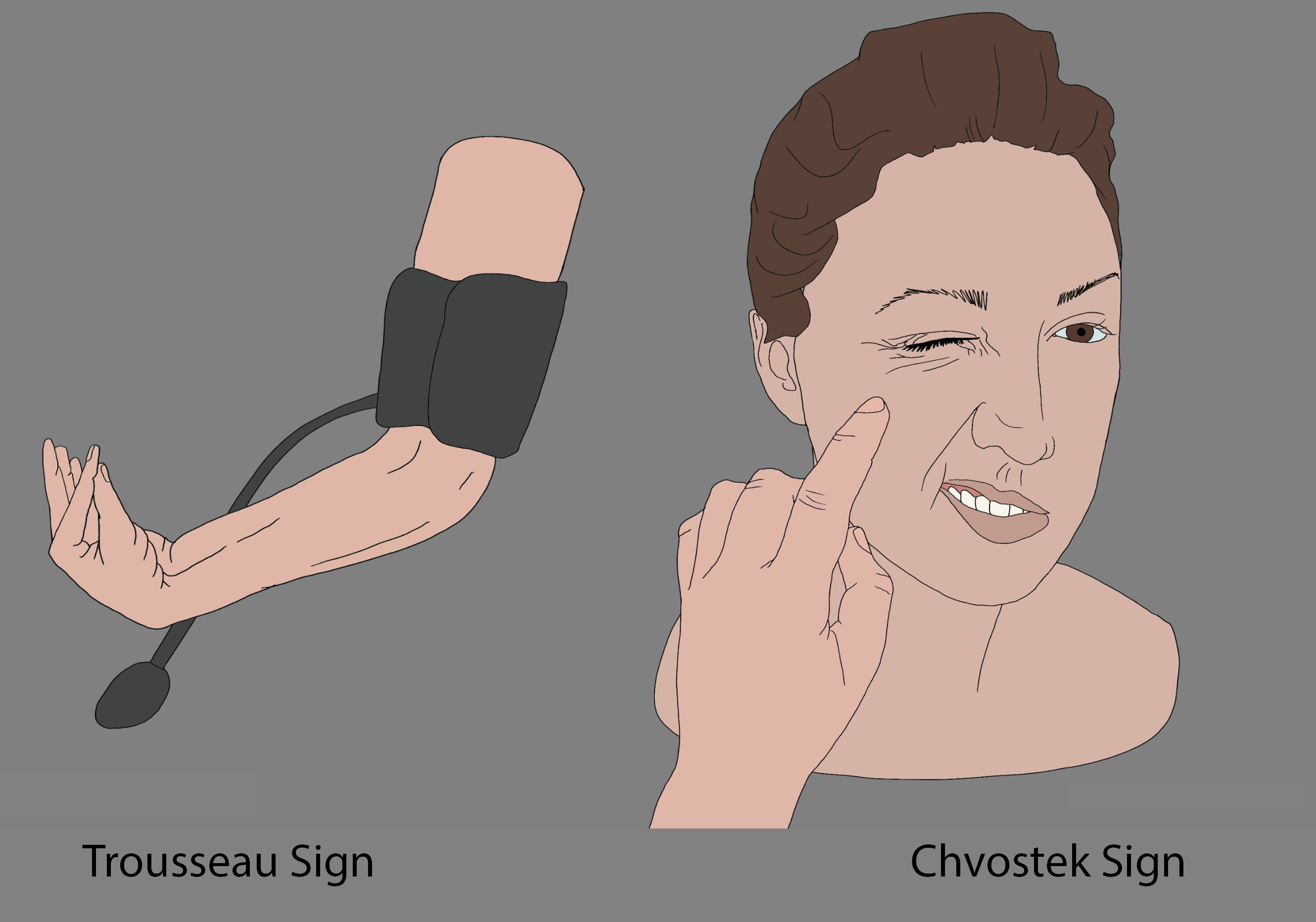Definition/Introduction
In the late 1800s, Dr. Chvostek noticed that mechanical stimulation of the facial nerve (as with the examiner's fingertip, for example) could lead to twitching of the ipsilateral facial muscles.[1] The long-accepted explanation is that this resulted from hypocalcemia, and this relationship became known as the Chvostek sign.[2] When corrected for albumin, a calcium level of less than 8.8 mg/dl is considered deficient.[3] Calcium is an essential electrolyte in the body. It is associated with many functions and of greatest significance; muscle contractions and propagation of nerve impulses. Deficiencies in calcium may lead to seizures, cardiomyopathy, QT prolongation, and congestive heart failure.[4] Secondary to this, patients often receive replacement therapy in the hospital setting. One common cause of hypocalcemia is a complication during thyroidectomies.[5]
The normal individual has four parathyroid glands that are usually located on the posterior surface of the thyroid gland. One or more parathyroid glands may get accidentally resected during surgical intervention on the thyroid. The parathyroid glands produce parathyroid hormone (PTH), and any resection of those glands can decrease PTH levels.[6] PTH regulates calcium levels in the body; hence, reducing its serum level will lead to hypocalcemia.
